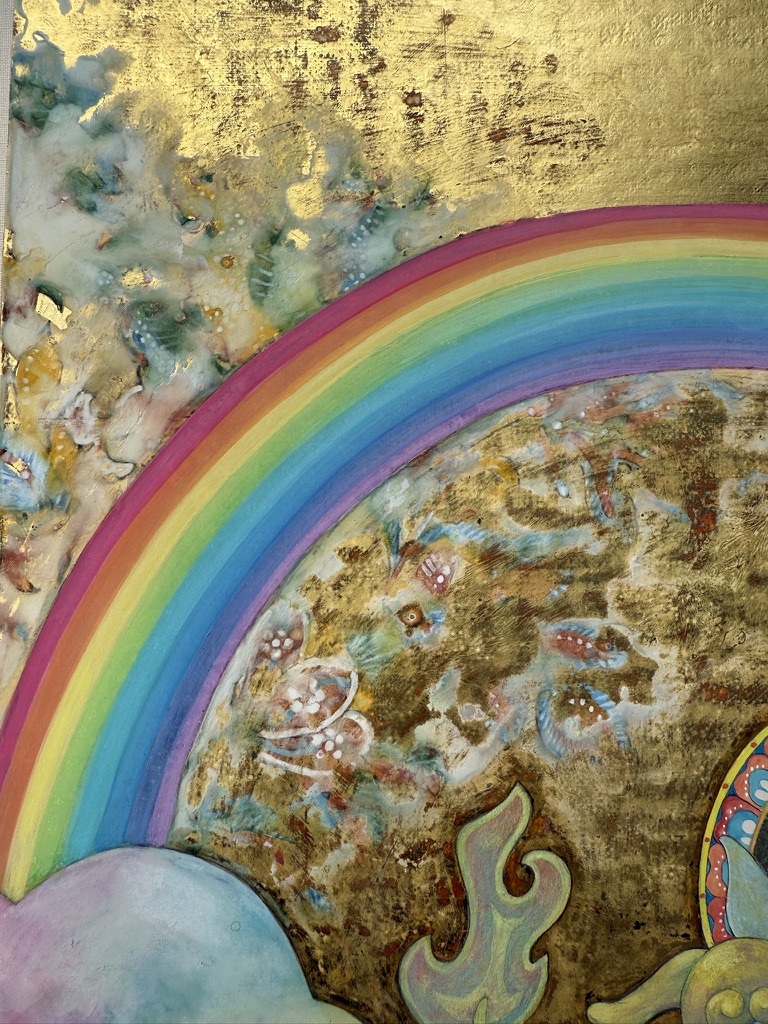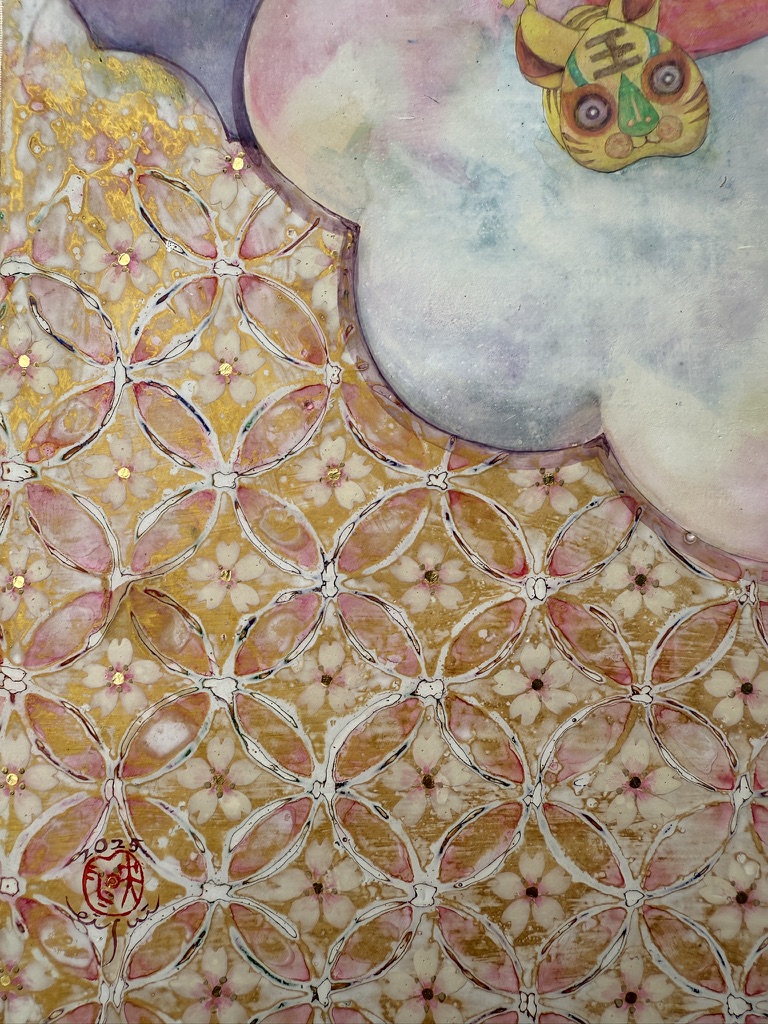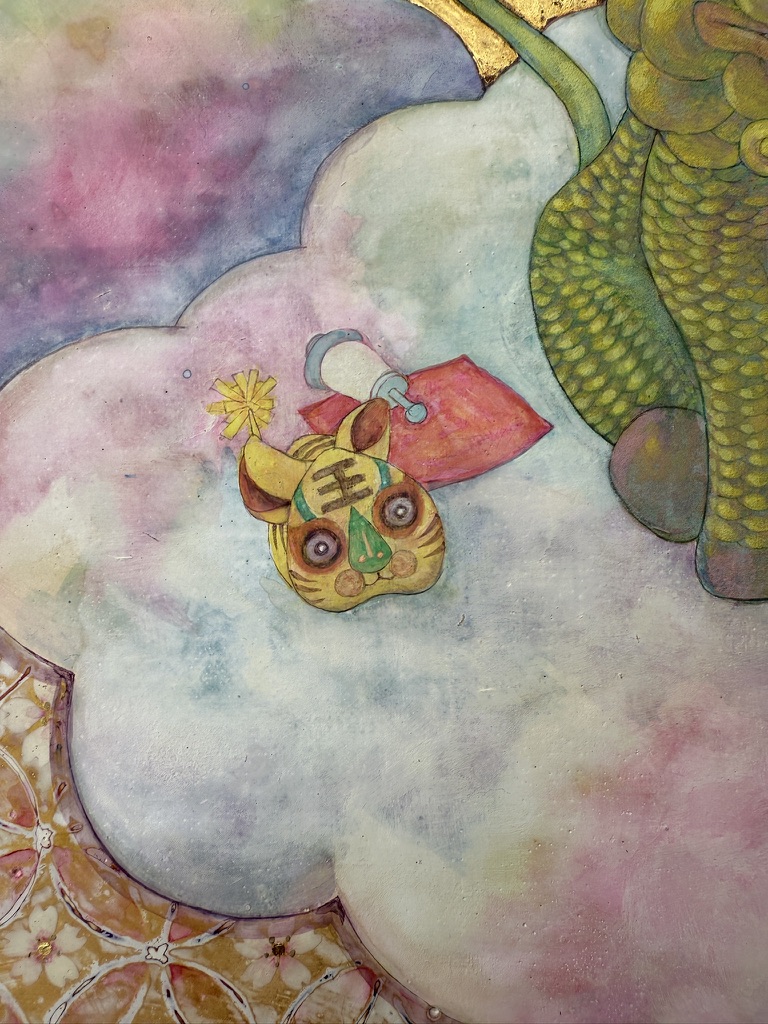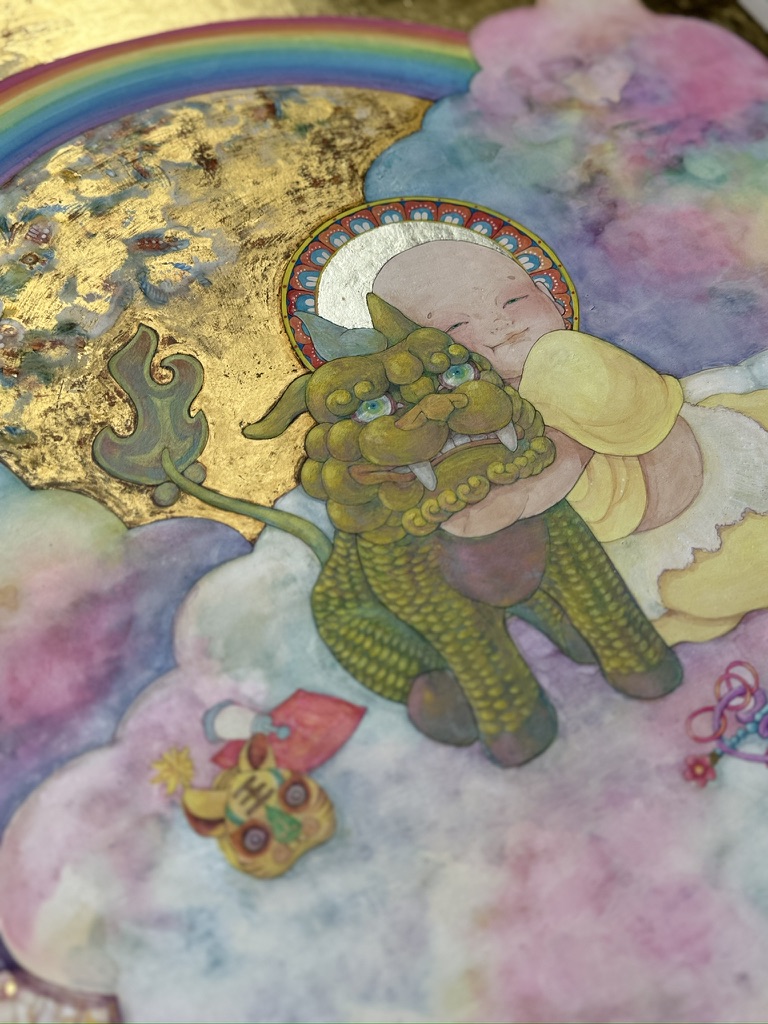Painting
Baby Jizo
Story
Although Jizo Bodhisattva has already attained enlightenment and is fully prepared to become a Buddha,
it is said that he chooses not to ascend to Buddhahood.
Instead, he remains a bodhisattva so that he may stay close to us and continue his mission of compassion.
But why would one who is ready to become a Buddha choose not to?
According to Buddhist belief, after the passing of Shakyamuni Buddha, there will be a period of 5.67 billion years before the arrival of Maitreya Bodhisattva.
During this long era without a Buddha present in the world, Jizo Bodhisattva vows to appear in every realm of existence—the six realms of hell, hungry ghosts, animals, asuras, humans, and heavenly beings.
He takes upon himself the suffering of all beings in their place.
He is especially known as the compassionate savior of those who fall into the hell realm.
His blessings include protection of children, safe childbirth, protection from accidents, good health, and many other forms of benevolence.
Though a bodhisattva, he is most often depicted as a shaven-headed monk holding a staff (shakujō) and a wish-fulfilling jewel.
Baby Jizo in this artwork portrays what such a deeply compassionate being might have looked like as an innocent baby.
With a bright, carefree smile, he lovingly embraces a mythical Chinese creature called Taichō (Taichong)—a guardian beast said to have the head of a tiger, the body of a dragon, the tail of a lion, and the legs of a qilin.
In Chinese lore, this noble creature serves as Jizo’s divine mount.
In this piece, the two have been inseparable friends since childhood.
Baby Jizo squeezes Taichō so tightly that his cheeks rise into a joyful smile, and together they gaze up at a rainbow stretching across the sky.
In Japanese folklore, it is said that babies who die young or are unable to be born remain on the riverbank of the Sanzu River, stacking stones that are repeatedly knocked down by demons.
Jizo Bodhisattva protects these innocent souls, which is why statues of Jizo along the roadside are often dressed with small hats and bibs.
Learning that, in China, newborns are traditionally given tiger-themed clothing and toys for protection, I included gifts such as stuffed animals and rattles beside Baby Jizo—offerings welcoming a newborn child into the world.
And in the far sky where the two look up,
I imagine countless stars—each one a precious life—shining brightly.
it is said that he chooses not to ascend to Buddhahood.
Instead, he remains a bodhisattva so that he may stay close to us and continue his mission of compassion.
But why would one who is ready to become a Buddha choose not to?
According to Buddhist belief, after the passing of Shakyamuni Buddha, there will be a period of 5.67 billion years before the arrival of Maitreya Bodhisattva.
During this long era without a Buddha present in the world, Jizo Bodhisattva vows to appear in every realm of existence—the six realms of hell, hungry ghosts, animals, asuras, humans, and heavenly beings.
He takes upon himself the suffering of all beings in their place.
He is especially known as the compassionate savior of those who fall into the hell realm.
His blessings include protection of children, safe childbirth, protection from accidents, good health, and many other forms of benevolence.
Though a bodhisattva, he is most often depicted as a shaven-headed monk holding a staff (shakujō) and a wish-fulfilling jewel.
Baby Jizo in this artwork portrays what such a deeply compassionate being might have looked like as an innocent baby.
With a bright, carefree smile, he lovingly embraces a mythical Chinese creature called Taichō (Taichong)—a guardian beast said to have the head of a tiger, the body of a dragon, the tail of a lion, and the legs of a qilin.
In Chinese lore, this noble creature serves as Jizo’s divine mount.
In this piece, the two have been inseparable friends since childhood.
Baby Jizo squeezes Taichō so tightly that his cheeks rise into a joyful smile, and together they gaze up at a rainbow stretching across the sky.
In Japanese folklore, it is said that babies who die young or are unable to be born remain on the riverbank of the Sanzu River, stacking stones that are repeatedly knocked down by demons.
Jizo Bodhisattva protects these innocent souls, which is why statues of Jizo along the roadside are often dressed with small hats and bibs.
Learning that, in China, newborns are traditionally given tiger-themed clothing and toys for protection, I included gifts such as stuffed animals and rattles beside Baby Jizo—offerings welcoming a newborn child into the world.
And in the far sky where the two look up,
I imagine countless stars—each one a precious life—shining brightly.
Summary
Baby Jizo
Production year:2025
Materials: Panel, earth (soil), hemp cloth, Japanese pigment paste, acrylic emulsion, mineral pigments, gold leaf, water-gilded gold, brass leaf、aluminum leaf
Size: F1o
Private Collection
Please contact us by Email.
Please feel free to contact us for more information about our activities and works.













